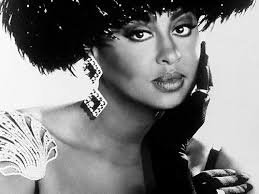Patriarchy and the Music Industry: Women Victims (2)
6. Cassie Ventura: When Ventura ventured into the music industry, the goal was to make music, as should be expected. She would sign a 10-album deal with P.Diddy’s Bad Boy Records which never materialized, as her business deal with Diddy would be switched to a romantic one.
Her eleven year long romance was marred by physical, emotional and sexual abuse. Diddy used his powerful position to dominate,manipulate and control the naive teenager, who had considered him a father figure.
He literally exerted himself into her personal life and flaunted his status on the impressionable Ventura. He would introduce her to drugs to foster compliance and obedience, while enforcing his sex trafficking plans on her. The abusive relationship and power dynamic is akin to Ike and Tina Turner, and it was difficult to break free from a malicious and vindictive entity like Diddy. However, the day of liberation came and in the aftermath of her lawsuit against him which currently draws keen interest from music lovers across the world, the darkness which beclouds the music industry has been exposed.
7. Janis Joplin: She was allegedly a junkie before stardom, and she allegedly died after an overdose on heroin alone in room 105 of the Landmark Motor Hotel in Hollywood, two weeks after the demise of Jimi Hendrix. It appears that the narrative of drug addiction was already crafted and made to engulf her persona while alive, in order to justify her tragic end, which appeared orchestrated. Moreover, over the years, the name Clive Davis, the music mogul extraordinaire, the man who discovered her has constantly been linked to her death.
8. Lisa “Left-Eye” Lopes: Following the 1996 Grammys, the best-selling girl group of all time, TLC comprising Tionne “T-Boz” Watkins, Lisa “Left Eye” Lopes and Rozonda “Chilli” Thomas spoke at a press conference upon winning two awards that night for the album CrazySexyCool. They revealed that their success was merely superficial, as they were broke despite having sold 23 million copies of the album.
The group had filed for bankruptcy the previous year citing debts totaling $3.5 million accrued from Lopes's insurance payments for her arsonic attack on former boyfriend Dallas Austin’s house, Watkins's medical bills, but mainly the rookie predatory contract with Pebbitone which was a subsidiary of LaFace Records, a subsidiary of Arista Records, under the rulership of Clive Davis as the reasons for their bankruptcy.
With the two units functioning as middlemen under the Arista brand, investments for recording, manufacturing and distribution were recouped. Pebbitone and LaFace Records further deducted money for expenditures like airline travel, hotels, promotion, music videos, food, clothing, etc. The ladies noted that their debts compounded with more success and they were made responsible for the remuneration of managers, lawyers, producers, etc. Tax deductions further left each member with less than $50,000 a year , despite millions of albums sold. LaFace Records declined an attempt for renegotiation which led to the bankruptcy filing.
It has been said that Clive Davis earned 75 million dollars and gave them 150 thousand dollars to split up. The young ladies were clearly ripped off. Consequently, they confronted and held him hostage at gunpoint with Left-Eye, pulling the gun. This effrontery was considered a gross misconduct and would mark her for elimination.
The girls were villified for ignorantly appending their signatures on a predatory contract. However, it bears highlighting that the music industry strictly targets young talents, who are at a life stage whereby they are pliable, susceptible and unaware of the intricacies of music business. This phase allows the vampires to capitalize on their ignorance and implement draconian decisions which go unchallenged. The industry preys on their lack of negotiatory powers and desperation to attain fame.
Interestingly, the group was initially convened by Crystal Jones, who conceptualized the tomboyish and hip-hopy image, akin to the boy group BelBivDevoe. Watkins and Lopes would join her to actualize the dream. Despite being the group’s anchor, Jones was kicked out by Antonio “LA” Reid, who called for her replacement. Jones had revealed that upon her insistence to have the contract reviewed by a lawyer and other parties before signing, and denial of the chance to take the documents home, she faced antagonism from Reid and Pebbles, his wife at the time, and owner of Pebbitone.
Patriarchy finds the assertiveness and intelligence of women threatening and intolerable. Its longevity is fundamentally premised on the endorsement and participation of willfully ignorant and docile women, who function as gatekeepers and footsoldiers, and protectors of male ego. These are the ones who work against the interest of fellow women. This is the case in the entirety of the industry.
Jones was replaced by Thomas and the girls would thereafter experience the horrors that she had tried to circumvent. Three albums later, Lopes expressed her unfulfillment within the group given her reduced function to periodic eight bar raps and vocal invisibility in several songs. She longed to participate in background vocals. The girls would take a hiatus to pursue individual projects and on April 25, 2002, Lopes died in a car crash while filming a documentary in Honduras. The patriarchy had waited patiently to actualize its vindictiveness. The car crash was the second of two accidents she experienced in the central American country. Just like Angie Stone, she was the only casualty in the incident. Coincidence?
9. Phyllis Hyman: Hyman was a strong black woman and operated in a league of her own. She was a vocal powerhouse with phenomenal phrasing, intelligent, classy, absolutely gorgeous, confident, critical thinker, authentic, outspoken and audacious. The imposing 6-footer possessed the qualities marked by patriarchy as anomalies in women.
To justify patriarchal and white racist thoughts, Clive Davis made futile efforts to clip her wings and exert control over her. Firstly, he attempted an image reinvention into a cross-over artist for a wider appeal. Artists who cater to a limited audience are often projected as unsuccessful and unappealing. But, it must be underscored that it is usually a question of their artistic choice. Besides, the rage about cross-over serves the greed of music executives whose goal is entry into a wider market where more profits can be generated, as the white audience tends to spend more than their black counterpart.
Nonetheless, Hyman objected to the proposition. A whiteman was not going to order her around. She had a vocal richness which transcended the superficiality of pop music. Her vocal versatility facilitated a dexterity in multiple genres like R&B, Jazz, musical theatre and show tunes making her tapestry hard to replicate. It is rare to find singers in this age who can justifiably cover her songs.
She preferred her limited R&B audience and was unwilling to “sell out”. She refused to dye her hair blonde, wear generic attires for mass appeal and dispose of her elegant hats. Furthermore, she refused to streamline her focus to just music and continued acting and modelling. This caused a rift between the two. Consequently, Davis labelled her “an angry black woman” and difficult to work with. He sabotaged her career through a withdrawal of album promotion. She expresses her disappointment in the song “Living in Confusion” https://www.youtube.com/watch?v=fwgVOqJQZqQ
In addition, Davis opened up Arista Records for more women, to ignite female rivalry. They included Angela Bofill, Aretha Franklin, Dionne Warwick, Whitney Houston, etc. It has been noted that Houston was particularly groomed as her replacement. As a result, both women never got along. Dionne Warwick would “steal” her song “Walk Away” which was planned for release as part of the album Prime of my Life in 1988, but was somewhat questionably stalled. Here, we see patriarchy doing what it knows best, that is, the divide and conquering of women, and pitting them against each other. It thrives, not on female alliance but on female rivalry. If Hyman failed to worship its representative and stroke his diabolic ego, other women will. And they did! Yet, we wonder why most women are disrespectful and unco-operative, one to another.
Like Janis Joplin and Whitney Houston, she had gotten entangled in the web of drug addiction in the 70s and 80s. The mental issues stemming from the bad blood with Davis further triggered drug use as a coping mechanism. She often spoke about her depressive state which were results of the music industry’s politicization of music and quest for instant gratification, as well as disregard for investment in artistic development and the emotional abuse under Clive Davis. Known for depressive songs, the emotional frequency of her songs are reminiscent of Mary J.Blige. This functioned as a conduit for emotional ventilation. Due to a deficiency of romantic love in her lived reality, she often refrained from such songs. However, according to the grapevine, Davis coerced her to sing melancholic songs, in order to justify her eventual demise under a suicide-triggering depression.
Upon leaving Arista, she achieved immense success and often spoke about her horrendous experiences under Clive Davis. She once noted in an interview that…”Clive Davis taught me to never be afraid because I was so terrorized by him…..I should be respected as I respect and I will not have someone try to ruin my spirit and ruin my career…..If his plan was to destroy my career, it didn’t work”.
On June 30th 1995, Hyman would die under very suspicious circumstances with fingers pointing at Clive Davis. She was found unconscious in her apartment in New York, and had been scheduled to perform at the Apollo Theatre in Harlem that evening, six days to her 46th birthday.
10. Sinead O’ Connor: O’ Connor’s career as a mainstream artist died long before her physical demise two years ago. Initially, she was famous for her reinterpretation of Prince’s “Nothing compares to you”. But, she would become infamous on the 3rd of October 1992, during an appearance on Saturday Night Live, where she protested against the Catholic Church. After performing an acapella version of Bob Marley’s “War”, she tore up a picture of Pope John Paul II and declared “fight the real enemy” [https://www.youtube.com/watch?v=wrkdWXmvl68]
She was drawing attention to the child abuse perpetrated by the Catholic Church, as a survivor herself. At the time, this historical monstrosity was an open secret which the world refused to acknowledge. Her protest was simultaneously personal and political as it encompassed the theme of racism and imperialism, as mirrored by the song performed. Historically, the Catholic Church played a significant role in the invention of empire and the paradigm shift from the earth’s original modus operandi. It also became the engine and powerhouse of patriarchy.
Her mainstream career trajectory perished that night, but it opened the leeway to personal and career liberation. She released seven studio albums thereafter, and toured the world. She was revolutionary and avantgardist in every sense of the word and derailed from the voiceless docility expected by society of women. However, her mental health suffered immensely owing to public opprobrium for her bravery. Many considered her performance as profane and cancel culture became their coping mechanism.
Today, the conversation that O’Connor hoped to spark has become normative and an acceptable fact. Even the Pope has validated her in his acknowledgement of the anomaly. But as far as empire goes, the world is yet to unanimously grapple with the truth, particularly the beneficiaries.
11. Whitney Houston: When Whitney Elizabeth Houston sang “Same Script, Different Cast” with Deborah Cox in 2000, it appeared to be a melancholic song signalling betrayal in a romantic relationship. However, upon a closer examination, the song was a double entendre, as it imperceptibly revealed her business relationship with Clive Davis. The lyrics foretold the fate that would befall her as a music artist, just like other women singers before her. It appears to have also been a forewarning to incoming artists.
The most haunting part of the lyrics states:
This is a retake of my life
I was his star for many nights
Now the roles have changed
And you're the leading lady in his life
Lights, camera, now you're on
Just remember you've been warned
Enjoy it now 'cause it won't last
Same script, different cast
Houston had a smooth-sailing entry into the industry having had an exceptionally outstanding voice and strong social network. She became Clive Davis’ highest selling artist and chief cash cow. Nonetheless, she was not considered special enough, as she was dealt the same blow as Janis Joplin, Phyllis Hymann, Angela Bofill, etc. Being commodified, her value laid in her ability to generate money which depended on the wholesomeness of her pipes. Following the deterioration of her voice, Houston was demystified, dethroned and no time was expended in her disposal. On the eve of the Grammys in February 2012, she was found dead in a bathtub in her hotel room at the Beverly Hilton. To add insult to injury, the Pre-Grammy party organised by Davis and scheduled for the evening went on unhindered, as if she had been insignificant.
Her death was ruled as accidental, while heart disease, cocaine use, with multiple drugs found in her system were cited as factors. Few years later, the autopsy was countered and reports indicate that she was actually murdered with bruises on her body and missing teeth. She had died fighting for her life. Her killers placed her body in a bath tub, although she had revealed countlessly that she preferred showers in hotels and found baths abhorrable. According to the grapevine, Houston was working at loosening Clive Davis’ grip over her life and career. She had planned to reclaim her masters and write a memoir.
Despite having been introduced to hard drugs by her step brother, who confessed on the Oprah Show, her addiction was amplified when she became an artist. The disturbing interview in 2002 with Diane Sawyer, where she commented that “crack is whack” and her appearance at Michael Jackson’s 30th Anniversary as an Entertainer presented a gaunty Houston to the world. If anyone cared about her, why was she allowed to appear publicly at such a downtrodden moment of her life? Why was she billed to perform or grant interviews given her physical incapacitation? It appeared that these were foundations laid in preparation for the justification of her eventual elimination.
And then she died and became more valuable dead than alive.
Since her tragic demise, various merchandises have been pushed using her image. It is said that in Sony Music contracts, for instance, a "death clause" facilitates a label’s continual utility of an artist's recorded work and their likeness after their death. It is a common industry tactic which guarantees the record company’s collection of “their” money upon an artists demise, regardless of the manner of death. Coincidence? I think not!
In conclusion, the recurring decimal in the lives of the aforementioned women singers is Clive Davis. He is said to be singlehandedly responsible for the truncation of many a career in the industry. Marked with a narcissistic persona, the man is a ruthless barracuda whose primal preoccupation has been the pursuit of financial gains and is accustomed to having his way with all artists. Canadian singer, Gino Vannelli spoke about how disputes with Davis harmed his career. Artists like Patrice Rushen and Angela Bofill had similar experiences. As such, Davis can be described as one with Medusa’s touch because everything or artist he touches turns to stone.











